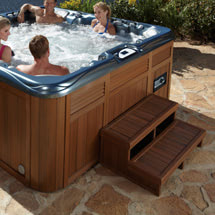Sauna Before Bed vs. Morning Sauna: Timing Your Sessions for Different Wellness Goals
-
Share

You’ve invested in a home sauna—one of the best decisions you can make for your long-term wellness. But here’s a question that many sauna owners grapple with: when is the best time to use sauna sessions to maximize the benefits? The answer isn’t one-size-fits-all. The timing of your sauna routine dramatically affects the outcomes you experience, and understanding how to align your sessions with your specific wellness goals can transform your sauna from a luxury amenity into a powerful tool for daily health optimization.
Whether you’re seeking deeper, more restorative sleep, looking for a natural energy boost to start your day, or hoping to accelerate recovery after workouts, the timing of your sauna sessions matters significantly.
Sauna Before Bed: Your Evening Wind-Down Ritual
If improving sleep quality tops your wellness priority list, an evening sauna routine may be your most valuable investment. The science behind sauna before bed benefits is compelling and well-documented. When you spend time in a sauna, your body temperature rises considerably. After you exit and begin cooling down, your core temperature drops, which signals to your brain that it’s time for sleep. This temperature regulation process mirrors your body’s natural circadian rhythm and can significantly enhance both how quickly you fall asleep and the quality of rest you experience.
Research published in Sleep Medicine Reviews demonstrates that passive body heating—including sauna use—can improve sleep quality and help people fall asleep faster. The study found that heating the body 1-2 hours before bedtime optimized the natural drop in core body temperature that facilitates sleep onset. This isn’t just about feeling relaxed; it’s about working with your body’s biological mechanisms to promote genuine, restorative rest.
The optimal timing for sauna before bed is approximately 1-2 hours before you plan to sleep. This window allows your body temperature to rise during your session and then gradually normalize, creating the ideal conditions for sleep. Most people find that 15-20 minute sessions provide sufficient benefits without overstimulation. If you sauna too close to bedtime, you may actually feel too energized to fall asleep immediately, so respecting this timing window is crucial.
Beyond temperature regulation, evening sauna sessions offer profound stress reduction benefits. After a demanding day filled with work deadlines, family responsibilities, and the general chaos of modern life, stepping into your sauna creates a boundary between the day’s demands and your personal restoration time. The heat helps relax tense muscles accumulated from hours of sitting, standing, or physical activity. Your mind finally has permission to stop problem-solving and simply be present.
Creating an effective evening sauna routine means treating this time as sacred and non-negotiable. Prepare by hydrating well throughout the day and having water available during your session. Keep the lighting dim or utilize chromatherapy features if your sauna includes them. Avoid bringing your phone or other devices that might stimulate your mind. Instead, practice deep breathing exercises, listen to calming music, or simply sit in quiet reflection. After your session, take a lukewarm or cool shower to help your body temperature normalize, then transition into your bedtime routine. This consistent ritual signals to your brain and body that sleep is approaching, creating a powerful conditioning effect over time.
Evening sauna routines particularly benefit stressed professionals who need a decompression buffer between work and home life, parents seeking self-care after children are settled for the night, and anyone struggling with anxiety or racing thoughts that interfere with sleep quality.
Morning Sauna Benefits: Energizing Your Day from the Start
On the opposite end of the spectrum, morning sauna sessions serve an entirely different purpose. Rather than preparing your body for rest, a morning sauna benefits routine jumpstarts your system, awakening both body and mind for the day ahead. When you begin your day in the sauna, you’re essentially giving your cardiovascular system a gentle workout that increases circulation, elevates your heart rate slightly, and delivers oxygen-rich blood throughout your body.
The mental clarity benefits of morning sauna use are particularly remarkable. Many regular users report that morning sessions provide a sense of focus and alertness that rivals or even surpasses their morning coffee. There’s something about the combination of heat, intentional breathing, and the absence of distractions that clears mental fog and helps you approach your day with greater presence and purpose. For remote workers or anyone working from home, a morning sauna routine creates a powerful psychological boundary between personal time and work time, establishing a ritual that prepares you mentally for productivity.
The best time to use a sauna in the morning is typically upon waking or shortly after a light breakfast. Unlike evening sessions designed to relax and sedate, morning sauna sessions can be shorter and potentially at higher temperatures—typically 10-15 minutes is sufficient to achieve the energizing benefits without taking up too much of your morning routine. Many people find that following their sauna session with a cool or cold shower amplifies the invigorating effects, creating a powerful one-two combination that leaves you feeling alert and ready to tackle your day.
Building morning sauna sessions into your routine requires some strategic planning, especially if you’re not naturally a morning person. Start by setting your alarm 20-30 minutes earlier than usual to accommodate both the sauna session and a brief transition period. Pre-hydration is particularly important for morning sessions since you’ve gone hours without water overnight. Keep a glass of water on your nightstand and drink it upon waking, then have more water available during and after your sauna session.
The consistency of a morning sauna wellness routine compounds over time. What might feel challenging the first week becomes an anticipated ritual that you genuinely look forward to. Busy professionals, athletes preparing for training sessions, and anyone seeking to establish a grounding morning practice find tremendous value in this approach. Weekend morning sessions can be slightly longer and more leisurely, while weekday sessions remain efficient and focused.
Post-Workout Sauna: Timing for Optimal Recovery
For fitness enthusiasts and athletes, the question of best time to use a sauna often centers around workout recovery. Post-exercise sauna sessions serve a distinct physiological purpose: accelerating muscle recovery, reducing inflammation, and improving flexibility. When you exercise, your muscles experience micro-tears and accumulate metabolic waste products. The increased circulation from sauna heat delivers nutrients and oxygen to these tissues while helping clear waste products that contribute to soreness.
Research published in Biology of Sport found that post-exercise infrared sauna sessions can significantly enhance recovery by reducing muscle soreness and improving neuromuscular performance. The study showed that athletes who used saunas after resistance training experienced less delayed onset muscle soreness and better maintenance of explosive performance compared to passive recovery.
The optimal timing for recovery-focused sauna sessions is immediately after your workout or within 30 minutes of completing your cool-down period. Sessions of 20-30 minutes allow sufficient time for the therapeutic effects without overtaxing your already-stressed system. The temperature you choose may depend on workout intensity—after particularly demanding sessions, slightly lower temperatures may feel more comfortable and still provide benefits.
Post-workout sauna sessions pair beautifully with stretching routines. The heat increases tissue pliability, allowing for deeper, more effective stretches that improve flexibility and range of motion. This combination addresses both the immediate recovery needs and the long-term mobility that prevents injury and supports continued athletic progress. Remember to prioritize hydration and electrolyte replacement, as you’re building on fluid losses from both exercise and heat exposure.
People with home gym setups find particular value in having sauna access immediately after training. The convenience eliminates the need to shower, dress, drive to a facility, and then repeat the process—you simply move from one space in your home to another. This seamless integration makes consistent recovery practices far more sustainable over time.
Finding Your Personalized Sauna Wellness Routine
Here’s the beautiful truth about having a home sauna: you’re not limited to choosing just one timing approach. Many sauna owners develop varied routines that adapt to their changing needs throughout the week. The key is listening to your body and tracking how different timing approaches affect how you feel. Start by choosing one approach that aligns with your primary wellness goal and commit to it for 2-3 weeks. Pay attention to markers like sleep quality, energy levels throughout the day, workout recovery time, and overall stress levels. After this trial period, you can adjust your approach or experiment with a different timing strategy.
Some wellness-focused individuals build comprehensive routines that incorporate multiple timing approaches throughout the week. For example, a training athlete might use post-workout recovery sessions on training days, evening sessions on rest days to promote parasympathetic nervous system activation, and energizing morning sessions on weekends. A busy professional might prioritize evening sauna routines during the work week for stress management and better sleep, then enjoy leisurely morning sessions on weekends when time pressure is reduced.
Consistency ultimately matters more than perfection. Even if you can only commit to three sauna sessions per week, maintaining that regular practice will yield more benefits than sporadic, infrequent use regardless of optimal timing. Your body adapts and responds more effectively when it can anticipate and prepare for the regular heat exposure that sauna practice provides.
Your Sauna, Your Schedule, Your Wellness
The true advantage of owning a home sauna lies in this flexibility. You’re not constrained by gym hours, facility availability, or anyone else’s schedule. Your sauna is available whenever you need it, ready to support whatever wellness goal takes priority on any given day. Whether you’re an infrared sauna devotee enjoying gentler heat for morning sessions or a traditional sauna enthusiast who loves the intense heat of evening relaxation, understanding how timing affects outcomes empowers you to maximize your investment.
Ready to explore how a home sauna can transform your daily wellness routine? Visit any of our Sundance Spa & Sauna Store locations to experience different sauna options and speak with our wellness consultants about creating a routine that works for your lifestyle and goals.



